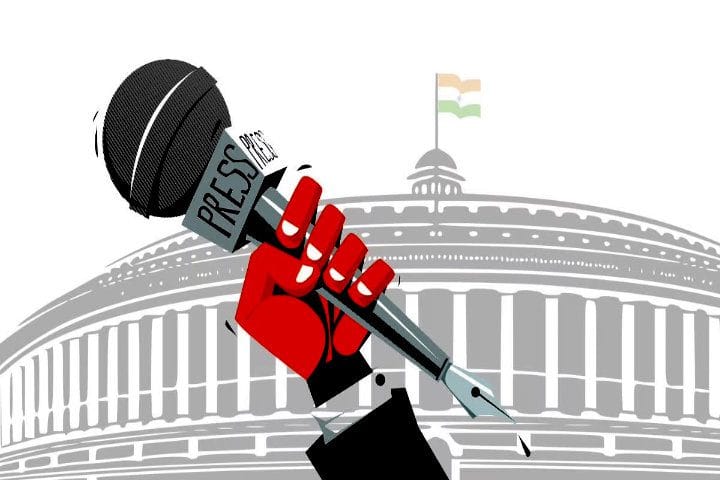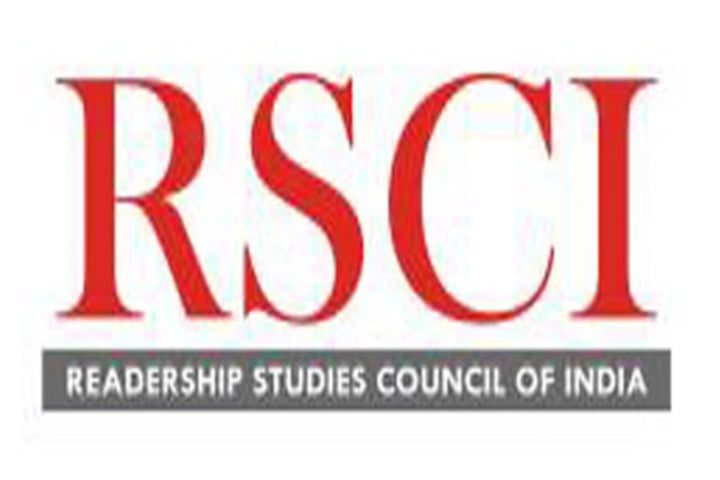Press Commission of India
The use of press controls as instruments of imperial power during India’s colonial history significantly influenced the evolution of media regulations in the country. Therefore, analyzing how British colonial press regulations influenced the media landscape is essential, leading to the need for press commissions in independent India.
Colonial Press Control: Origins and Evolution

The Wellesley Regulations, 1799
Lord Wellesley’s Press Regulations of 1799 established systematic press control in India. These regulations required:
- Mandatory printing of the printer’s and publisher’s names on books and papers
- Pre-censorship of all printed material
- Submission of all printed content for government inspection before publication
Wellesley’s correspondence indicates that the primary reason for the regulations was the fear that French revolutionary ideas could influence India: “The freedom of the press is the right of every British subject…but in India, such freedom would be incompatible with the existence of our power.”
The colonial administration enacted several acts to regulate the press in the country during 1799, 1818, and 1823.
Licensing regulations 1823
The act, enacted by acting Governor General John Adams, established regulations for press operations. The regulations direct every publisher and printer to obtain a government license before starting a press.
The government retained the authority to revoke the license at any time, even after granting permission for developments. Individuals who violated these regulations faced a fine of four hundred rupees, and their press operations were at risk of confiscation by the government.
The restrictions mainly focused on newspapers in Indian vernacular languages or those edited by Indians. The British grew more cautious about the spread of “Indian nationalism” movements throughout the country. Raja Rammohan Roy stopped publishing Mirat-ul-Akbar due to increasing British pressure.
The Metcalfe Act, 1835 (Press Act of 1835)
In 1835, Sir Charles Metcalfe enacted the Press Act, restoring press freedom. Metcalfe served as governor-general from 1835 to 1836. He repealed the 1823 ordinance, earning the title “liberator of the Indian press.”
The Press Act of 1835 required printers and publishers to provide a detailed account of their publication premises and to cease operations if they issued a similar declaration. This liberal press policy led to a quick growth of newspapers.
Licensing Act, 1857
The emergency of the 1857 revolt led to the addition of licensing rules to the Metcalfe Act’s registration process. The government also retained the power to stop publishing and circulating any book, newspaper, or other printed matter.
The Press and Registration of Books Act, 1867
The act required all printed materials, including newspapers and books, to list printers, publishers, and locations. Every published entity must be submitted to the local government within one month of the original publication date.
This landmark legislation marked a shift from direct censorship to bureaucratic control. Key provisions included:
- Mandatory registration of printing presses
- Submission of copies to the government
- Detailed record-keeping requirements
- Powers to inspect printing premises
In 1878, Lord Lytton remarked that while appearing to be merely procedural, the Act masked its genuine intent: “The native press is a powerful engine for mischief, which we cannot safely leave uncontrolled.”
The Vernacular Press Act, 1878 (The Gagging Act)
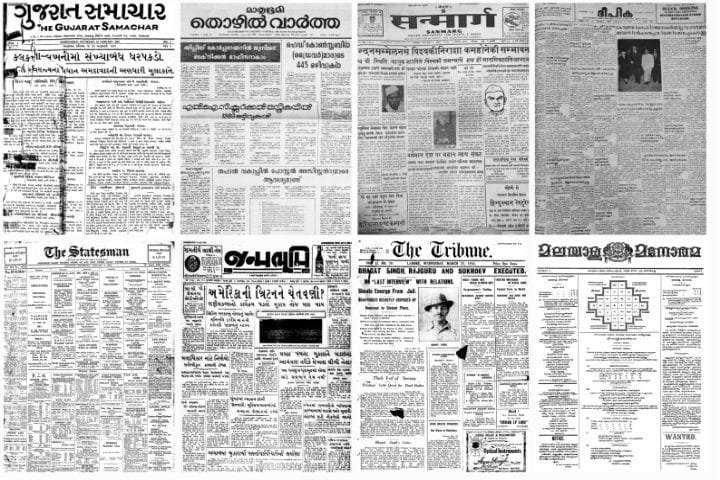
Lord Lytton introduced the Vernacular Press Act of 1878 to suppress vernacular language newspapers, describing them as “mischievous scribblers preaching open sedition.”
This act significantly restricted the freedom of the vernacular press in India. The objective was to suppress the rising voice of protest through the press in India’s vernacular languages and to limit seditious writings, leading to its nickname, “The Gagging Act.”
The provisions of the Act included:
- The district magistrate may require the printer and publisher of any vernacular newspaper to sign a bond with the government, agreeing not to incite disaffection or hostility among various religions, castes, or races in their publications. The district magistrate may require a security deposit, impose forfeiture for violations, and seize press equipment for repeated offenses.
- The magistrate’s decision was final, and no legal appeal was possible.
- A vernacular newspaper can receive an exemption from the Act by presenting evidence to a government censor.
The Vernacular Press Act highlights Bengal’s Amrita Bazar Patrika, showcasing the spirit of the Indian press during that period. Following the imposition of the Vernacular Press Act, Amrita Bazar Patrika began publishing in English, as the Act did not apply to English newspapers.
A few new measures were enacted between 1908 and 1912:
- The Newspapers (Incitement to Offences) Act and The Criminal Law Amendment Act of 1908,
- The Press Act of 1910
- The Prevention of Seditious Meetings Act of 1911
The 1908 Act aimed against extremist nationalist activity. The Act allowed magistrates to seize press property that published material likely to incite murder or violence.
The Press Act of 1910 severely impacted Indian newspapers. This Act revived the worst features of the Vernacular Press Act of 1878. The Act granted the local government the authority to require a security deposit from the printer or publisher at the time of registration and to forfeit or deregister the newspaper if found in violation.
Additionally, the local government required the newspaper printer to provide two complimentary copies of each issue. Almost 1,000 vernacular papers faced prosecution under the Act.
The Defence of India Rules were implemented to suppress political agitation and restrict free public criticism during the First World War.
Indian Press (Emergency Powers) Act, 1931
Mahatma Gandhi’s Salt Satyagraha effectively utilized the press to mobilize the public against the British. This increased tension between the press and the government. After Gandhi’s arrest in 1930, the government enacted the Press (Emergency Powers) Act of 1931, which gave the provincial governments censorship powers.
The Second World War began in September 1939, leading to more restrictions. The government called for stricter censorship despite the Press Emergency Act of 1931. It controlled and filtered international news that was coming in.
The All-India Newspaper Editors’ Conference emerged in response to these censorship acts. The conference aimed to safeguard the rights of the press in the country. It fought with the British government to lift the restrictions and advocated for better relations with the government.
Impact of Colonial Regulations
Colonial press regulations systematically suppressed Indian perspectives:
- The vernacular press faced stricter controls
- Publishers were required to provide heavy security deposits
- Editors faced imprisonment for “seditious” content
The British administration’s approach to press control in colonial India involved a discriminatory dual system, resulting in significantly different conditions for English and vernacular publications.
The English-language press had fewer restrictions, lower security deposits, and more freedom to criticize local government. However, vernacular publications had to deal with harsher censorship, stricter rule interpretation, less political commentary, and too-high security deposits.
The Need for Press Commissions in Independent India
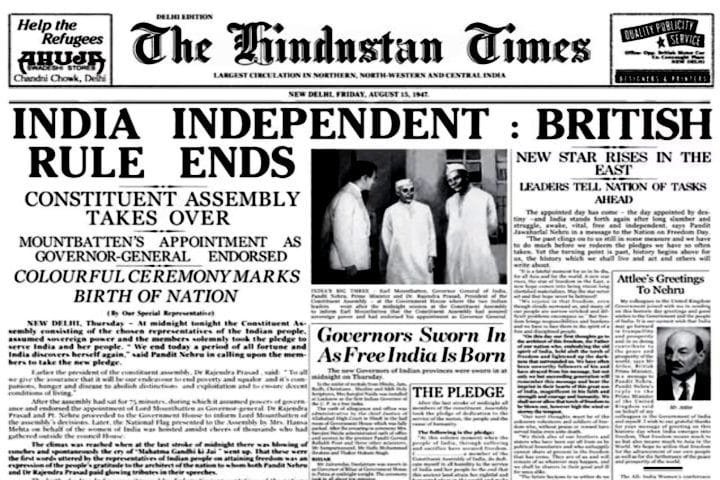
The issues influenced the First (1952) and Second (1978) Press Commissions in independent India, addressing current challenges and colonial suppression’s effects.
By 1947, the country faced an outdated regulatory framework, concentrated media ownership, limited vernacular press development, widespread self-censorship, and restricted regional coverage.
The new government acknowledged the need to democratize the media, set professional standards, restructure the industry’s economic foundations, and align the press with the public interest.
Other priorities were focusing on a shift from control-oriented to development-oriented regulation, promoting diverse voices, and supporting the growth of the vernacular press.
Establishing professional standards was crucial, including ethical guidelines, journalist training programs, and industry standards. Monopolistic practices must end, smaller publications must thrive financially, and the media ecosystem must receive support.
Finally, balancing press freedom with social responsibility, promoting development journalism, and addressing regional disparities in media access were important public interest considerations.
With all these initiatives, independent India aimed to redefine the media’s role by establishing press commissions to tackle various challenges and align with democratic aspirations and development goals.
The commissions agreed that the vernacular press needed affirmative action, professional training programs, economic support systems, and the advancement of regional language journalism. These problems stem from the fact that the Indian press used to silence indigenous voices during colonial times systematically.
First Press Commission of India
Editors and journalists urged the Indian government to investigate the press in India and suggest improvements after independence.
Jawaharlal Nehru, the then Prime Minister, announced the establishment of the First Press Commission on September 23, 1952, with Justice G.S. Rajyadhyksha as its chair. The Commission included the following members: C.P. Ramasamy Iyer, Acharya Narendra Dev, Dr. Zakir Husain, Dr. V.K.R.V. Rao, P.H. Patwardhan, T.N. Singh, Jaipal Singh, J. Natarajan, A.R. Bhat, and M. Chalapathi Rao.
The commission’s task included a thorough examination of the press’s current state in the nation, its trajectory, and its future directions.
After two years of work, the commission submitted its report on July 14, 1954. The report had 3 parts. The first part contained the recommendations; part II contained the history of journalism in India; and part III contained the memoranda, questionnaire, reports of readership surveys, etc.
The major recommendations of the commission were the following:
Press Council
One of the Commission’s most significant recommendations was the establishment of a statutory Press Council, envisioned as a quasi-judicial body comprising 25 members, including journalists, owners, and nominated individuals.
They assigned the council the responsibility of protecting press freedom, upholding journalistic standards, and formulating a professional code of conduct. The Press Council of India began in 1966, implementing the recommendation.
Registrar of newspapers in India
Equally important was the recommendation to establish the Registrar of Newspapers for India (RNI) as a statutory authority. The RNI was created to keep detailed records of newspapers and periodicals, verify circulation claims, and track ownership patterns. The recommendation was implemented quickly, with the RNI established in 1956.
Price-Page Schedule
The Commission introduced the innovative concept of a price-page schedule to prevent unfair competition in the newspaper industry through the Newspaper (Price and Page) Act, 1956. This schedule established a fixed relationship between the number of pages, price charged, and advertisement space, primarily to protect smaller newspapers from predatory pricing by larger publications.
This measure was particularly significant in ensuring the survival of smaller newspapers in a competitive market.
Advertising Council
Recognizing advertising’s growing influence, the Commission recommended establishing an autonomous Advertising Council. This body was meant to develop comprehensive advertising standards to regulate advertising content and practices, prevent deceptive advertisements, and protect consumer interests.
The Commission recommended regulating advertisement content and proposed capping the proportion of space devoted to advertisements, though this recommendation was notably left out of the final legislation.
Newsprint
The Commission paid special attention to newsprint policy, recommending the creation of a statutory newsprint advisory committee. The Commission advocated for equitable distribution of subsidized newsprint to prevent larger newspapers from cornering quotas, thus helping smaller publications remain viable.
This committee was to oversee equitable newsprint distribution, regulate imports, implement price control mechanisms, and maintain buffer stocks. The Commission particularly emphasized the need to develop indigenous newsprint production to reduce import dependence.
News Agencies
Regarding news agencies, the Commission made significant recommendations for restructuring, particularly suggesting that there should not be state-owned or state-controlled news agencies.
The government should refrain from assisting news agencies in ensuring their independent operations. The aim was to ensure their independent functioning while preventing monopolistic practices. The Commission also emphasized encouraging regional news agencies to ensure diverse news coverage.
Government Advertisements
The Commission addressed the crucial issue of government advertisements by recommending a transparent distribution policy. This led to the creation of the Directorate of Advertising and Visual Publicity (DAVP), which established merit-based allocation criteria and special considerations for small and medium newspapers. The Commission emphasized regular auditing of advertisement expenditures to ensure fairness.
Newspapers should not be unfairly allocated government ads based on their political or communal views. The government should place advertisements based on circulation and target area.
Declaration of ownership
On ownership matters, the Commission mandated comprehensive disclosure requirements. These included complete ownership details, financial sources, changes in ownership structure, and foreign investments. Annual submission of ownership statements was made mandatory to ensure transparency in media ownership.
This was particularly important given the Commission’s finding that 20 business houses controlled 80% of newspaper circulation.
Monopolies
The Commission also recommended strong anti-monopoly measures, including restrictions on cross-media ownership and limits on newspaper chains. The Commission designed these measures to prevent market dominance and ensure media plurality, demonstrating its commitment to maintaining a diverse press landscape.
Diversity of opinion should be promoted in the interests of free discussion of public affairs. The Press Registrar should bring to the notice of the Press Council if any monopolies arise in the newspaper industry.
The report documented how newspaper companies owned by large business houses enjoyed lower production costs, stable advertising revenues, and the ability to influence distribution agents. This led to recommendations for preventing market concentration, though these faced significant challenges in implementation, particularly after the Sakal Case judgment of 1962.
Law on Contempt of Legislature
Regarding the law of contempt of legislature, the Press Commission recommended comprehensive legislation. This included clear definitions of legislative privileges and protection of press freedom and established procedures for dealing with breaches, including an appeals process.
Foreign News
There should be no restriction on the flow of foreign news from whatever sources it comes. One of the functions of Indian news agencies should be to provide Indian news services to other countries.
These included appointing foreign correspondents, establishing exchange programs with foreign media, providing training for international reporting, and developing independent foreign news-gathering capabilities.
Press Commission Report and Aftermath
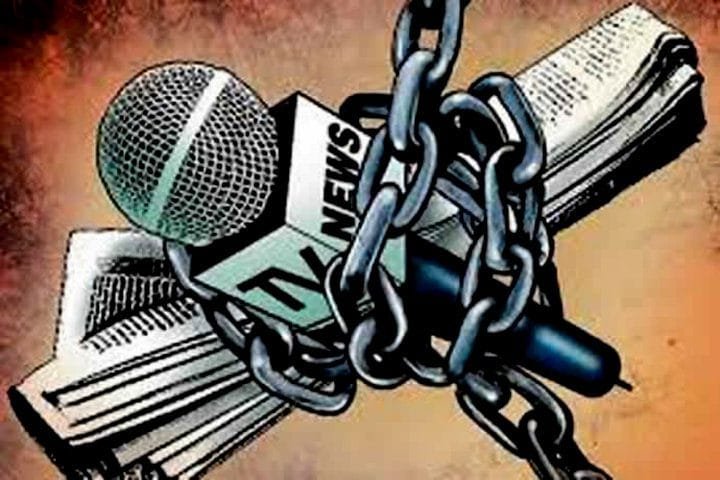
In 1956, Parliament introduced a bill that marked the first concrete attempt to establish the Press Council. However, this initial effort failed as the bill lapsed with the dissolution of the House in 1957. Following this setback, there was no significant action for nearly a decade.
The National Integration Council’s strong recommendation to establish the Press Council marked a pivotal moment. This recommendation finally provided the necessary political impetus for the institution’s creation.
The Press Council finally came into existence on July 4, 1966. However, its journey wasn’t smooth.
The Press Council Repeal Act of 1976 swiftly abolished the original Press Council under the 1965 Act during the 1975 Emergency.
When the Janata Party came to power, the Press Council Act of 1978 re-established it.
The delay appears to have resulted from:
- Initial legislative failures
- Lack of political consensus
- The absence of strong advocacy until the National Integration Council’s intervention
- Establishing the council’s structure and powers required complex negotiations.
The Council’s limited authority and inability to impose penalties on journalists and publications are indications that the lengthy time between recommendation and implementation likely contributed to some of its structural flaws.
Press Council Implementation
The appointment of the registrar of newspapers for India by the government was its most significant action. Following the recommendations, the government allowed the State Trading Corporation to import a restricted quantity of newsprint. This helped the small and medium newspapers get newsprint at a reasonable price.
The Supreme Court later declared the government-introduced pricing schedule invalid. As a result, the government pulled the schedule. The government accepted a number of the commission’s other recommendations at various times.
Second Press Commission of India
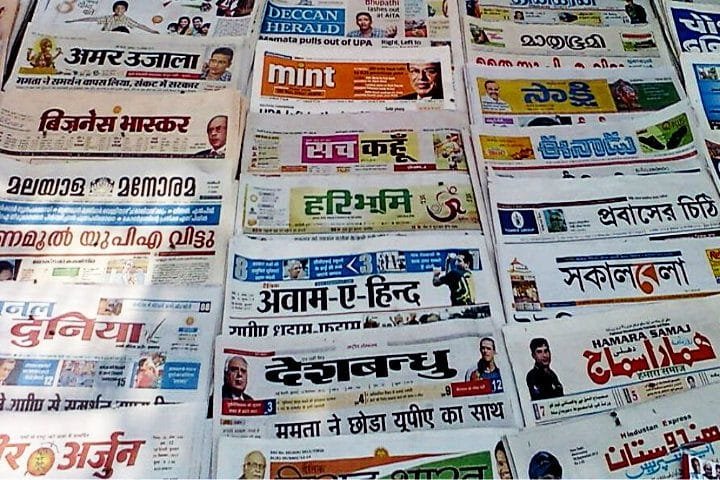
Following India’s first period of state authoritarianism, the Emergency period (1975–1977) led to the appointment of the Second Press Commission of India as part of broader media reform initiatives. Its mandate specifically included examining “ownership patterns, management practices, and the financial structure of the press.”
The timing was significant as it came after the emergency period when
- Over 7,000 journalists and media personnel were arrested
- More than 100 foreign correspondents were either expelled or banned
- Major newspapers faced censorship and financial pressure through the withdrawal of government advertisements
The Commission had to address three critical fault lines that had developed in the Indian press:
- The divide between English and non-English newspapers
- The relationship between metropolitan and regional language press
- The tension between normative and commercial approaches to press operations
Under Justice P.C. Goswami, the Janata Party government under Morarji Desai initially formed the Second Press Commission in 1978. The commission underwent a significant change when the Goswami-led commission resigned in January 1980 following the change in government. The new Prime Minister, Mrs. Indira Gandhi, constituted a ten-member commission in April 1980 under the chairmanship of Justice K.K. Mathew.
The formation and reconstitution reflected complex political dynamics.
- The original commission under the Janata government was likely meant to address press freedom issues highlighted during the Emergency.
- The resignation and reconstitution coincided with Indira Gandhi’s return to power, suggesting political influence over the commission’s composition.
The Second Press Commission had several significant implications:
- Emphasized that the press should be neither an adversary nor an unquestioning ally to the government
- Recommended making the MRTP Act applicable to the newspaper industry
- Suggested de-linking press from other business concerns
- Proposed specific news-to-advertisement ratios for different categories of newspapers
Structural changes suggested by the Second Press Commission:
- Recommended establishment of a Newspaper Development Commission
- Suggested constitutional amendments to specifically mention press freedom
- Called for the Press Council to develop a code of ethics for journalists
The commission’s formation and work represented an attempt to redefine press-government relations in post-Emergency India, though many of its recommendations remained unimplemented due to political changes and resistance from various stakeholders.
The Commission placed its report before the Parliament on November 5, 1982. The report contained as many as 278 recommendations. A committee of ministers was set up to study the recommendations. The major recommendations are the following:
MRTP Act and the Press
The Commission recommended applying the Monopolies and Restrictive Trade Practices Act of 1969 to the newspaper industry. The Commission held that there is no justification for exempting the newspaper industry from the provisions of the Act.
De-linking the Press from other business concerns
The majority of the Commission members believed that the press should be protected from the dominating influence of other business concerns. The Commission recommended the enactment of a law making it mandatory for persons publishing a newspaper to refrain from engaging in other business activities.
This debate was mainly influenced by incidents during the emergency, such as the case of the Hindustan Times, where business interests had influenced editorial decisions.
News to Advertisement Ratio
The Commission recommended reducing advertising dependence to improve press freedom. A news-to-advertisement ratio is absolutely essential for promoting fair competition among existing units and new entrants.
Therefore, the Commission recommends a news-to-advertisement ratio of 60:40 for large newspapers, 50:50 for medium-sized newspapers, and 40:60 for small newspapers. The Commission also proposed progressive taxation for newspapers exceeding the prescribed news-to-advertisement ratio.
Newspaper Development Commission
The Commission recommended setting up a Newspaper Development Commission to improve the quality of newspapers, especially medium and small ones. This Commission will make special efforts to facilitate the growth of Indian-language newspapers and newspapers of local interest.
“Normative” and “Commercial” Viewpoints
The Second Press Commission faced significant challenges in formulating its recommendations due to internal tensions between “normative” and “commercial” viewpoints. The commercial standpoint, which found majority support within the Commission, favored market-driven approaches over strict regulatory interventions.
Unlike the First Press Commission, this prevented the Commission from proposing strong measures to control market concentration.
Media Diversity
A significant aspect of the Second Press Commission’s deliberations was its recognition of how the media landscape had evolved. The rise of the regional language press created a new “big press” club that included metropolitan and regional players by the late 1970s.
However, the Commission noted that this diversity did not necessarily translate into a plurality of viewpoints, especially given the concentration of ownership within regional markets.
The Second Press Commission’s impact was limited by its inability to reconcile competing interests within the press industry. Due to the strong influence of commercial interests among its members, the Commission could not effectively address the continuing concentration of media ownership, whether by metropolitan or regional players.
The other major recommendations are briefly mentioned below.
- The role of the press should be neither that of an adversary nor an ally to the government but that of a constructive critic.
- Editors should have the final say in the acceptance or rejection of advertisements.
- The press should act as a unifying element and avoid objectionable, communal writing.
- The Commission recommended to the government to review Article 19(1)(a) of the Indian Constitution, which pertains to the freedom of speech and expression.
- The freedom of the press should be mentioned explicitly in the Constitution.
- The Commission wanted the Press Council to evolve a code of ethics for the journalists.
- Newspapers and periodicals should annually publish their financial accounts.
The Second Press Commission’s experience brought to light the increasing complexity of regulating India’s press sector, which requires balancing traditional concerns about media freedom and diversity against the reality of an increasingly commercialized and regionally powerful press.
Its deliberations and challenges continue to resonate in contemporary discussions about media regulation in India, particularly regarding the balance between commercial viability and social responsibility in press operations.
The Commission’s work marks an important milestone in Indian media policy, even though it could not achieve the kind of regulatory framework envisioned by the First Press Commission.

